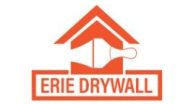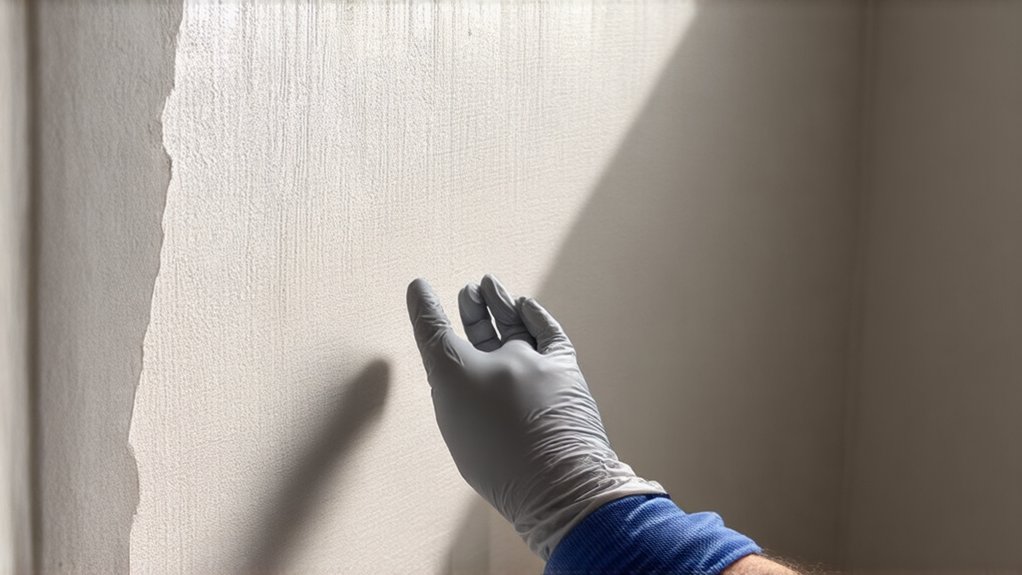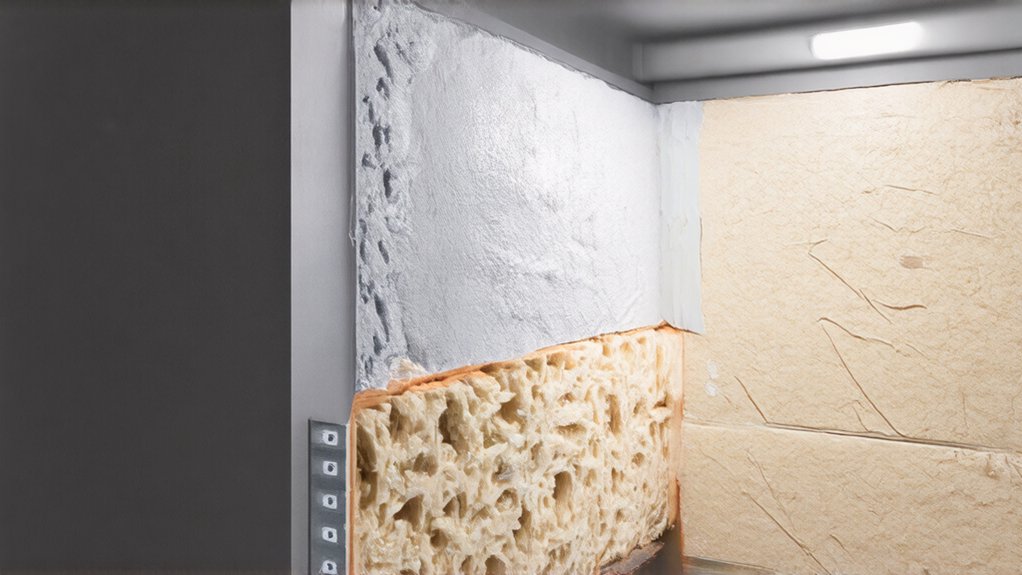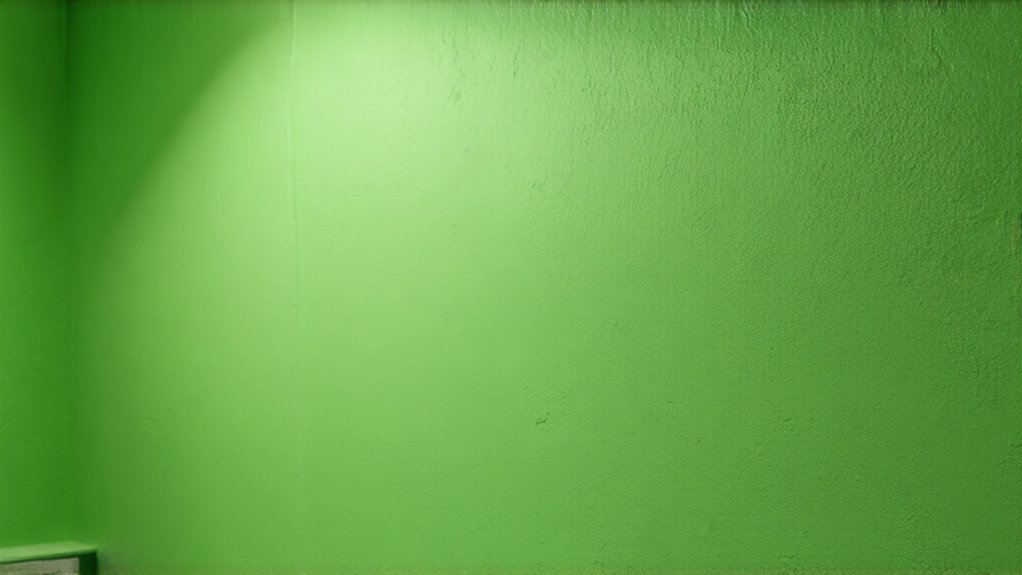When spring arrives, it's essential to inspect your walls for potential drywall damage. Start by examining high-traffic areas, corners, and spaces near windows and doors using a flashlight and moisture meter. Look for hairline cracks, water stains, or bulging sections that could signal underlying issues. Small damages can often be fixed DIY, but larger problems might require professional help. Stay proactive, and you'll catch problems before they become expensive repairs.
Understanding Common Types of Drywall Damage
When spring arrives, it's the perfect time to inspect your home's walls for potential drywall damage. You'll want to look closely for signs of moisture issues that could compromise your wall's integrity.
Structural defects like hairline cracks, water stains, or bulging areas often indicate underlying problems. These imperfections might seem minor, but they can quickly escalate into costly repairs if left unchecked.
Professional drywall contractors in Erie, PA recommend a thorough visual inspection to catch early signs of damage and prevent more extensive repairs.
Essential Tools for Effective Wall Inspection
Although wall inspections might seem formidable, you'll need the right tools to effectively check for drywall damage. Start with a powerful flashlight to uncover potential issues and a moisture meter to detect hidden water problems.
You'll want a sturdy ladder for reaching higher wall surfaces and preparing for a thorough inspection. Grab a stud finder to locate visible stud locations, which can help you understand wall structural integrity. A utility knife and tape measure will assist with precise wall surface preparation and measuring any unearthed damage.
Drywall installation experts recommend using specialized tools to ensure comprehensive wall assessment and early damage detection.
Armed with these tools, you'll confidently tackle your home maintenance.
Room-by-Room Wall Damage Assessment
Because drywall damage can lurk in unexpected places, you'll want to systematically inspect each room in your home for potential issues. Start in high-traffic areas like living rooms and hallways, identifying discoloration patterns that might signal water damage or structural stress. Pay close attention to corners, baseboards, and areas near windows and doors where damage often develops.
Monitor structural integrity by gently pressing walls to check for soft spots or unusual give. Kitchen and bathroom walls require extra scrutiny due to moisture exposure. Check for subtle cracks, bubbling paint, or slight discoloration that could indicate underlying problems needing professional assessment.
Professional Repair vs. DIY Wall Fixes
Deciding between professional repair and DIY wall fixes depends on the extent and complexity of your drywall damage. Small holes and minor cracks might be manageable for homeowners with basic skills, potentially saving money on cost considerations.
However, larger damages or complex repairs often require professional acumen. Your timeline requirements and skill level will markedly influence your choice. Professionals guarantee quality work and save you time, while DIY approaches can be rewarding but risky.
Consider your comfort level, available tools, and potential long-term consequences before making a decision. Choose wisely to protect your home's integrity.
Preventative Strategies to Protect Your Walls
Since home maintenance is an ongoing process, protecting your walls from potential damage requires proactive strategies and consistent attention.
You'll want to sealing cracks early and proactively inspecting your walls for signs of wear or stress. Regular visual examinations can help you catch minor issues before they become costly repairs. Check around windows, doors, and high-traffic areas for hairline fractures or subtle changes in wall texture.
Moisture control, proper ventilation, and maintaining consistent indoor humidity levels will considerably reduce your risk of drywall damage. Your diligence now can save you substantial time and money later.
Frequently Asked Questions
Can Small Drywall Cracks Indicate More Serious Structural Problems?
You'll want to take small drywall cracks seriously, as they might signal structural integrity concerns or foundation movement indicators. Don't ignore these warning signs—they could reveal deeper issues that'll require professional assessment and timely intervention.
How Much Does Professional Drywall Repair Typically Cost?
Professional drywall repair costs typically range from $50 to $350, depending on damage size. You'll save money by tackling small repairs yourself. Consider cost-effective DIY options that'll help you maintain your home and feel empowered enabled as a homeowner.
Will Homeowners Insurance Cover Extensive Drywall Damage?
You'll need to carefully review your insurance policy coverage for drywall damage. If the damage results from a covered event, you'll likely traverse the damage claim process successfully, potentially saving on costly repairs.
Are Some Wall Damages More Dangerous Than Others?
Some wall damages are more critical than others. Hidden drywall imperfections and uneven wall surfaces can signal serious structural issues. You'll want to investigate potential water damage, mold growth, or foundational shifts that might compromise your home's safety and integrity.
Can Temperature Changes Cause Unexpected Drywall Deterioration?
Yes, temperature changes can trigger drywall damage. You'll want to watch for thermal expansion and moisture migration, which can weaken your walls' structural integrity. Stay proactive, and you'll protect your home's comfort and your sense of belonging.



